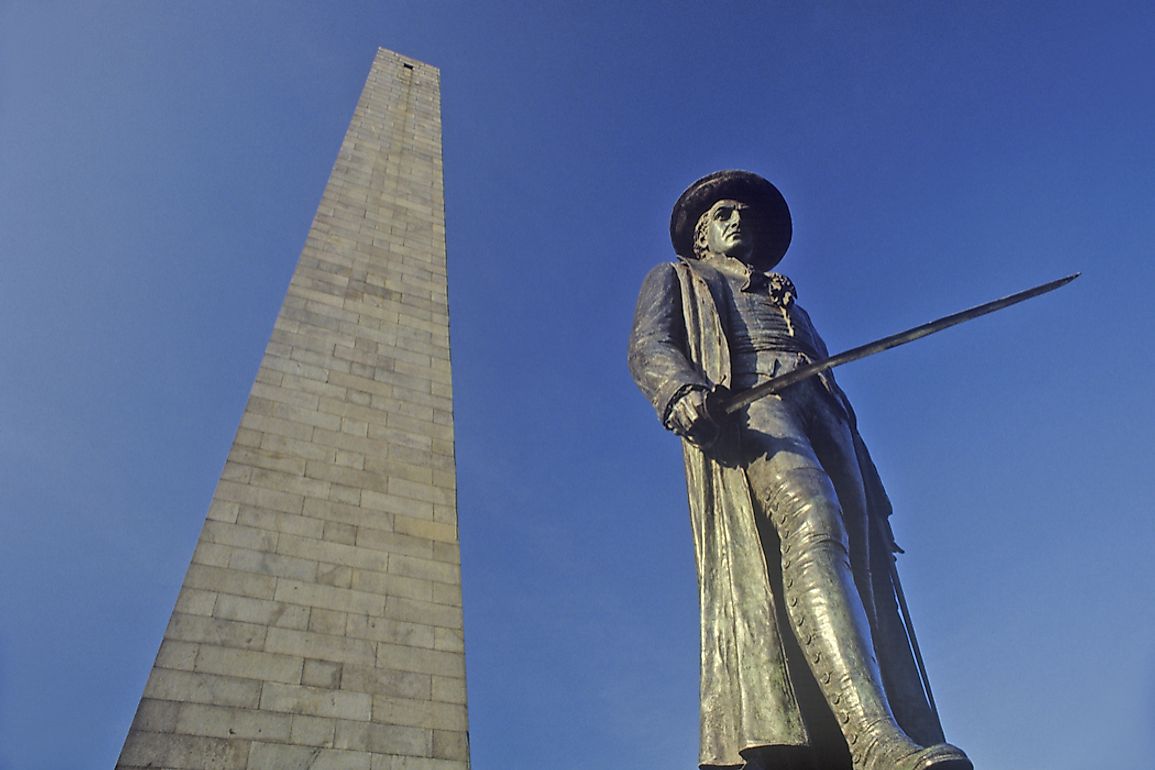Battle of Bunker Hill: The American Revolutionary War

What Was the Battle of Bunker Hill?
The Battle of Bunker Hill took place on June 17th, 1775, at Charleston Peninsula, Massachusetts, near Boston, although the majority of the combat took place on the nearby Breed’s Hill. This was during the Siege of Boston, which occurred during the earliest stages of the historical American Revolutionary War (1775 - 1783). The factors leading up to this particular battle were the Americans receiving intelligence that British troops were trying to keep control of the city of Boston and its seaports. These seaports were important to the British, as their ships could bring in reinforcement troops and supplies. The British were aiming to take over Breed’s Hill and Bunker Hill so as to achieve a strategic advantage, though the American forces firmly intended to stand and defend these hills.
Who Fought at Bunker Hill?
The combatants during this war were the British troops that were attached to the Boston garrison, and troops from what would become the American Continental Army. The leaders in the battle included Major General William Howe, who led the British up the hill against the Americans. The American Continentals had Colonel William Prescott as their leader. The British had Major John Pitcairn as the commander of their troops that began fighting at Lexington, which had marked the beginnings of the Revolutionary War. Israel Putnam was the General in charge of the Americans. The sizes of the armies were 2,400 troops on the British side, against an American Continental force made up of 1,500 troops.
What Happened during the Battle?
The British Grenadiers, battalions, and light infantry companies of men wore coats that were red in color, and headgear of their respective companies, including tricorne caps and hats and miter caps with bearskin fronts. They were armed with bayonets and muskets, and they also had light guns and the support of heavy guns that were with the fleet in the harbor. The Continentals, on the other hand, were not heavily armed, and they were low on ammunition. Armed with only muskets and any other firearms they could get, with some light guns and bayonets, they were prepared to take a stand nonetheless. The Americans hurriedly began to build a redoubt on Breed’s Hill on June 16th, 1775 during the night, and by morning the fortification was complete. Part of the British naval force in the harbor, a sentry on His Majesty’s Ship Lively observed the Americans presence there, and the British opened fire on them in quick order. They did this to prevent a flank attack, but few troops were mobilized to assume forward positions on Breed’s Hill. The British on the other side, under the command of Howe, moved to the southern shores of the peninsula, in order to allow the light infantry to attack the American line present on the sea shore. They should have assumed a position to the rear of the Americans, but it seemed like they discounted chances of the Americans resisting a frontal attack, or were overconfident of their troops’ abilities to make one themselves.
What Was the Outcome?
The British were considered to be the winners of the Battle of Bunker Hill as they managed to drive the Americans away from the Charlestown Peninsula, although they incurred heavy losses. However, they were aided by the fact that the ammunition of the Americans became exhausted, thus forcing the army to retreat from the peninsula. The British did not pursue them vigorously. The casualties of this battle stood at 1,150 killed and wounded for the British, and American casualties stood at 450 both killed and wounded.
What Was the Significance of the Battle of Bunker Hill?
This battle was important because it was the very first “strategically imperative” battle in the war for American Independence. This battle affected the overall war, as it marked the end of the American Political Revolution in a wake of the armed conflict. This also marked the ultimate rejection of British Parliamentary legitimacy over the American colonists in governing their thirteen colonies devoid of any American representation. A commemorative monument had its cornerstone laid on the site on the battle’s 50th anniversary, and a statue of Continental Army Colonel William Prescott was later erected for his valiant efforts in the fight. To save dwindling ammunition, he famously told his men to hold their fire on the British until they were close enough to see the “whites of their eyes”. Today, the location and a Bunker Hill Museum are maintained by the National Park Service as part of the Boston National Historic Park.







